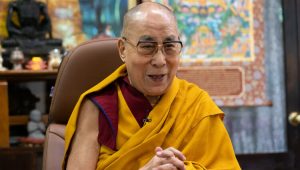Grants-In-Aid To The Dalai Lama’s Central Tibetan Relief Committee:

The Union government has extended the scheme to provide ₹40 crore grants-in-aid to the Dalai Lama’s Central Tibetan Relief Committee (CTRC) for another five years, up to fiscal year 2025-26.
Highlights of the Scheme:
- Launched in 2015.
- It is a scheme of providing grant-in-aid of ₹40 crore to CTRC to meet the administrative and social welfare activities expenses of 36 Tibetan settlement offices in different States.
More than one lakh Tibetan refugees are settled in India.
- Major concentration of the Tibetan refugees is in Karnataka, Himachal Pradesh, Arunachal Pradesh, Uttarakhand, West Bengal and Jammu and Kashmir.
- Tibetan refugees began pouring into India in the wake of the flight of the Dalai Lama from Tibet in 1959.
- The government decided to give them asylum as well as assistance towards temporary settlement.
- Over 1 lakh Tibetans are settled across India, while the remaining are settled in United States, Australia, Brazil, Canada, Costa Rica, France, Mexico, Mongolia, Germany, United Kingdom, Switzerland and various other countries.
- The Central Tibetan Administration exists and functions on the basis of the Constitution of the Tibetan government called ‘The Charter of the Tibetans in Exile’.
- In 1991, The Constitution Redrafting Committee instituted by the Dalai Lama prepared the Charter for Tibetans in exile.
- The Dalai Lama approved it on June 28, 1991.
- Only Tibetans living outside the subcontinent will elect their MPs based on their current geographic location. Besides MPs, voters will make their choice of the President as well.
- The voting will be held in two rounds.
- In the preliminary round, there will be no official candidates, i.e. a voter can choose any person of his choice, which is expected to be one of the several candidates who have started campaigning among the electorate.
- Unless a person secures 60 percent of the vote, the two top contenders of the first round will become the official candidates for the second round to be held in April 11.
- The Kashag (Cabinet) is Central Tibetan Administration’s highest executive office and comprise seven members.
- It is headed by the Sikyong (political leader) who is directly elected by the exiled Tibetan population.
- Sikyong subsequently nominates his seven Kalons (ministers) and seeks the parliament’s approval.
- The Kashag’s term is for five years.




